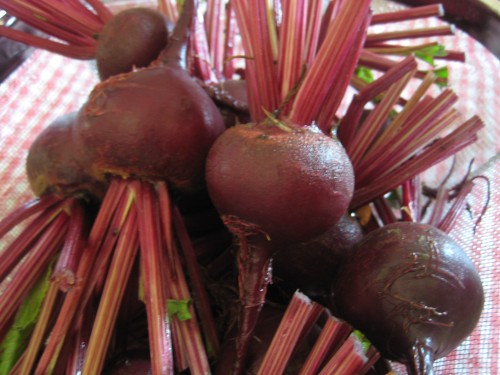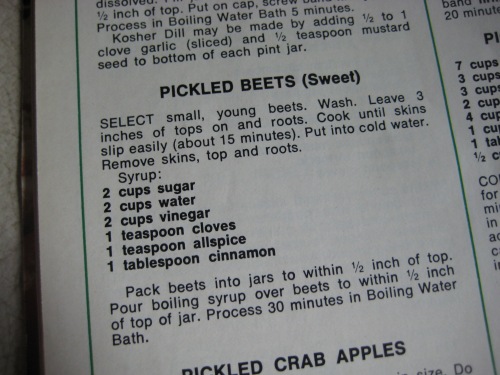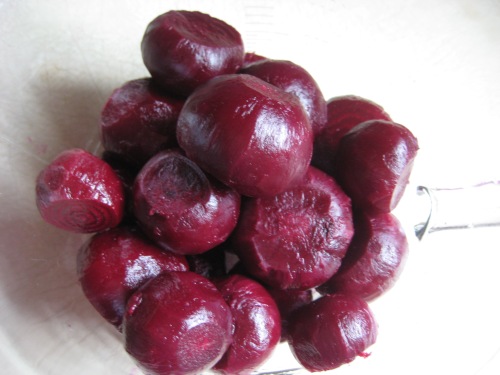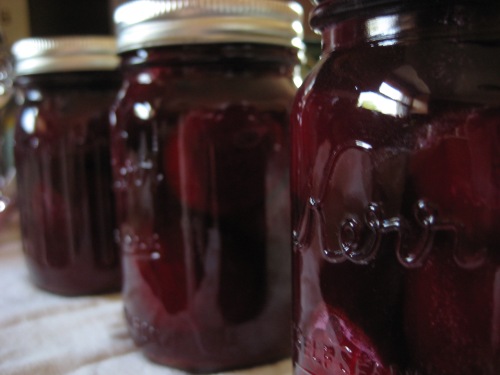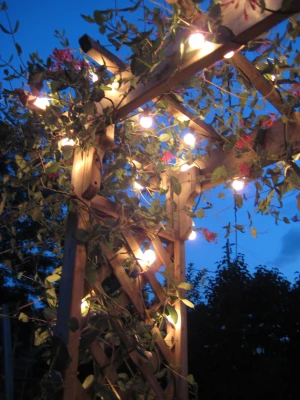Working a small urban garden requires creativity and planning. With limited space and sometimes odd sun and shade patterns, a gardener needs to have a strategy for working the space.
My 2010 garden was the first garden I planned in which I purposely planted early and late crops, tall and small crops, quick growers and slow growers together but in harmony with one another in order to make the most of my space. For a first timer, I did pretty well!

Before and after, the vegetables filled in the entire space.
In one raised bed I started the season with peas, lettuces, arugula and radishes. As those were being harvested, the cucumbers began to take precedence in the space, happily climbing up trellis in the middle of loose leaf lettuce. I was picking the cucumbers by the time the pumpkins really needed to sprawl out, and was able to pull out the cucumber vines when they were done producing so that the pumpkins could have the whole bed to themselves for the end of the season. When pumpkins were done in October, I planted garlic. The garlic will kick off the 2011 season when it shoots out of ground in about a month.

Peas and lettuces fill this bed in May and June.

By the end of June, cucumbers are climbing up the trellises.

Pumpkins take over the space to close out the season.
In the other bed, things got even crazier. Carrots were planted in a line down the entire length of the bed, dividing it. They took a break in the middle of the bed to give the leeks a 1′ x 1′ space to grow. I only grew 8 small leeks in that space, but they did grow!
Beneath tomato plants, I planted beets; next to those, marigolds. Cabbages and radicchio were neighbors to the spinach. Beans grew on both sides of the bed, and in the last remaining space I put fennel seedlings.

Close quarters for the fennel and beans.

Leeks filling a small space.

Marigolds, tomatoes and beets.
It was about mid-season when I realized how much the sun was affecting one corner of that bed. A tree was keeping it shaded for a few hours more than the rest of the garden, so the beans on that side did poorly. And the insects really liked the damp microclimate that was created by the shade. This was compounded by the fact that things were planted closely together, essentially shading each other. This year I will know this and plant accordingly.
There are many ways to plan a garden, I prefer to sketch things out beforehand, making sure I’ve got a spot for everything. Besides the raised beds, I use pots and flower beds along my house as well. All of these end up on my sketches, labeled with the intended occupant.
Once I’m out in the garden putting the plants in, I often make changes to my plan. It’s the gardener’s prerogative I suppose. Sometimes something doesn’t feel right, or look right. I change it. Sometimes what seemed like a good idea during a February planning session turns out to be a ridiculous idea in reality. I’m open to that.
Last year I wanted to grow celeriac–arguably the ugliest vegetable. I love soup made with celeriac, onions, apples and potatoes in the fall. It didn’t work out though. Turns out celeriac needs to be started really early, and my plan didn’t call for that. When I realized this I had to make some changes. No big deal though. A garden is a very fluid thing. It ebbs and flows. It changes itself depending on sun, water and other weather conditions. The gardener takes a cue from the garden itself and adjusts accordingly.
I’m working on my 2011 plan right now. It looks like I’ll need to buy some new supports for beans. I also need to think about how many vining plants I can realistically grow in a small space. I’m so tempted to try melons and squash as well as cucumbers, but how to manage so many vines? It really does require a plan, and probably some prudence as well.
I’m reminded of The Parable of the Sower (Matthew, chapter 13) in which the farmer scattered seed over various surfaces with equally varied results. We all know you can’t grow a seed on a path, a rock or among the thorns. Good soil produces good results. Likewise, God’s Word works on the soil that is ready to receive it. My heart needs to be a vessel of good soil, ready for God to work it. I can’t let the thorns take over my heart or let someone or something steal the Word from me because I’ve covered my heart with a path. And I certainly don’t want God to find a rocky place when he comes to sow his seed.
I’m making my garden plans, and I’m also preparing my heart for God. It’s something I am reminded of when I think of my garden and the act of sowing seeds. I know my heart can be a beautiful garden filled with the scent and beauty of God’s love. “But the one who received the seed that fell on good soil is the man who hears the word and understands it. He produces a crop, yielding a hundred, sixty or thirty times what was sown.” Matthew 13:23
I hope my garden here at home is as abundant as that in the parable!

An "abundance" of eggplant grows next to the house.

